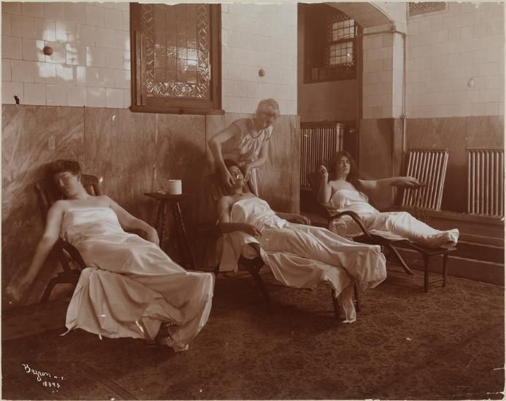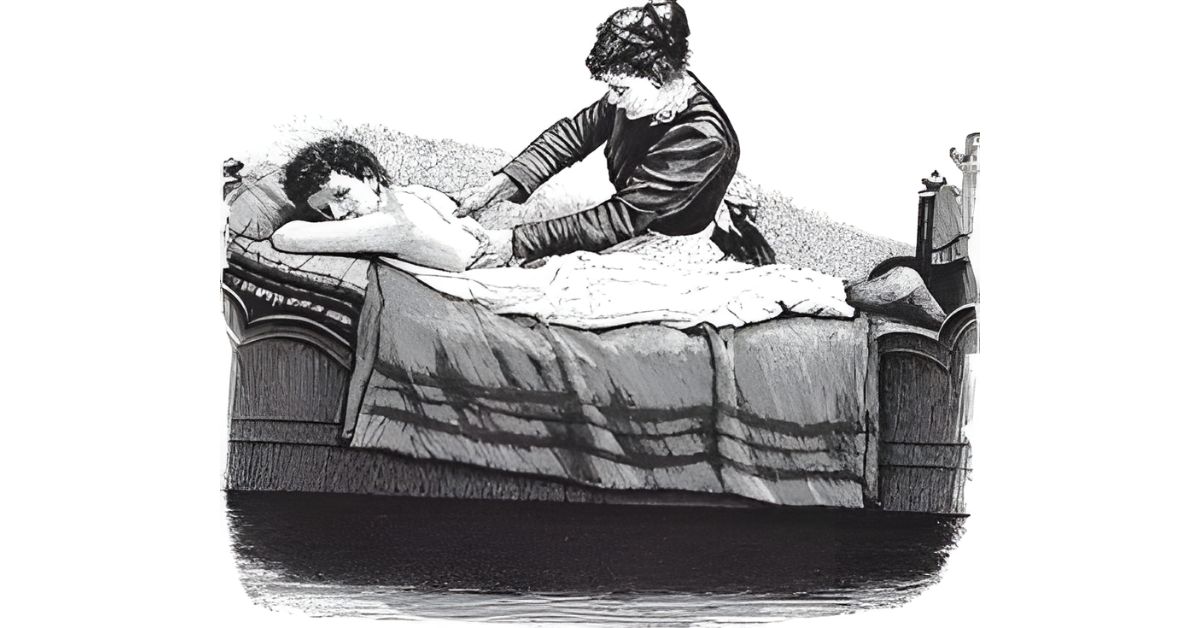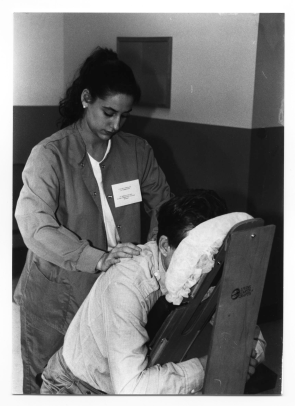A History of Massage in Workplace Wellness Programs

A History of Massage in Workplace Wellness Programs
Massage therapy isn’t just a luxury service at a spa; it’s a powerful tool that delivers real results for pain relief, stress reduction, and improved well-being. While its roots stem from ancient practices, massage therapy has carved its place in modern corporate wellness strategies.
Workplace wellness programs have come a long way from their basic beginnings. What started as simple break times and clean workspaces have evolved into comprehensive, holistic practices to improve employee satisfaction, health, and productivity. Today, massage therapy stands as a unique and essential component of these programs. We’ll provide a history of massage in workplace wellness programs and why it should be essential to any company’s wellness strategy.
The Origins of Massage
Massage therapy’s roots date back thousands of years. Ancient civilizations, including those in Egypt, China, and India, pioneered the practice of manipulating muscles and soft tissue to alleviate pain, improve circulation, and enhance well-being.
Chinese medicine introduced techniques such as acupressure, while the Indian tradition of Ayurveda emphasized using massage with herbal oils to harmonize the body and mind. Similarly, Egyptians used massage as part of their healing rituals, applying pressure points to stimulate wellness.
Over time, knowledge of massage spread across continents, shaping the practice into an art form revered for its health benefits. This ancient wisdom laid the groundwork for its eventual inclusion in wellness strategies, including today’s workplace programs.

The Beginnings of Workplace Wellness Programs
As we recognize them today, corporate wellness programs are a relatively modern concept, yet their origins can be traced back to the early 20th century. During this time, workers’ unions advocated for better labor conditions. They wanted workplaces to provide breaks, appropriate working hours, and amenities to improve employee well-being.
These early programs were simple and focused on the basics, such as providing lunch breaks and clean working environments. Companies like the National Cash Register (NCR) even went so far as to introduce dedicated restrooms where employees could take short naps.
These early measures demonstrated a growing acknowledgment that the workforce’s well-being directly impacted productivity and morale. While the early efforts were rudimentary, they paved the way for more integrated and thoughtful wellness practices in the decades to come.
Incorporation of More Holistic Practices
The 1960s and 70s ushered in a wave of cultural awareness about mental and physical health. During this time, progressive companies began experimenting with holistic wellness practices. They incorporated yoga, meditation, and fitness programs into workplace offerings.
This period marked a fundamental shift in how businesses viewed employee well-being. It was no longer seen as just a safety measure but as a strategic investment that could benefit employees and the company’s bottom line.
These practices emphasized mental clarity, stress reduction, and physical vitality, creating a balanced approach to workplace health. This focus on mind-body wellness set the stage for massage therapy to become a valuable addition to workplace wellness programs in the years to come.
Introduction to Massage in the Workplace
The 1980s represented a breakthrough moment for massage therapy in corporate settings. This was the era when chair massage services made their debut in workplaces. Portable massage chairs became a convenient way to bring relaxation to employees without needing a dedicated space or extensive resources.
Chair massages were especially popular in high-stress environments like tech companies and financial firms, where employees often faced long hours and tight deadlines. These quick sessions offered immediate benefits, such as stress relief, improved focus, and muscle tension reduction, making them an immediate success. This introduction of massage services laid the foundation for their wider adoption into corporate wellness programs.
Massage Gains More Traction
By the 1990s, massage therapy had evolved into a recognized profession with established licensing and certification standards. Its growing credibility brought significant attention to its health benefits, including pain relief, improved circulation, and reduced anxiety.
Forward-thinking companies began incorporating massage therapy as a regular feature of their wellness programs. These offerings included on-site chair massage services and employee discounts to local massage therapy providers.
Massage therapy proved especially valuable in industries where employees faced significant stress and physical demands. The inclusion of massage services demonstrated the necessity and the value of addressing physical and mental well-being in the workplace.

Technological Advancements in the 21st Century
The rise of technology-driven workplaces brought an increasing awareness of ergonomic injuries and chronic stress. Employees in desk-based roles were particularly susceptible to issues like back pain and repetitive strain injuries. This concerning trend created a new urgency for effective wellness solutions, making workplace massage programs more valuable than ever before.
Massage therapy emerged as a countermeasure to the physical and mental tolls of our digital work environments. Many organizations have adopted massage therapy to help employees combat these challenges, using it for relaxation and as a preventive tool. Beyond improving the immediate well-being of staff, businesses saw boosts in morale and productivity.
Present-Day Corporate Massage Services
Today, corporate massage services are a staple in many workplace wellness programs. Companies recognize the multiple benefits of massage therapy—enhancing employee satisfaction while reducing absenteeism and turnover.
Massage At Work specializes in corporate chair massage services designed with modern businesses in mind. Our licensed therapists can provide on-site services that fit seamlessly into your workplace, offering sessions that range from quick 15-minute massages to longer, personalized experiences. The convenience of on-site massage allows employees to relax and recharge without leaving the office, ultimately improving focus and productivity.
Incorporating Massage Into Your Wellness Program
Introducing massage therapy into your workplace wellness program is simpler than you might think. Massage At Work makes it easy to bring the benefits of massage to your workforce. Here’s our proven approach for successfully implementing massage therapy in your workplace.
- Assess Employee Needs: Gather feedback from surveys or focus groups to understand what your team wants and needs from wellness support.
- Determine Logistics: Choose between on-site services or reimbursement programs based on your team’s setup.
- Partner with Experts: Collaborate with Massage At Work to ensure premium-quality service from licensed, insured professionals.
- Communicate the Program: Launch your massage program with clear communication highlighting specific benefits to employee well-being and workplace satisfaction.
With ongoing support from Massage At Work, you’ll provide a wellness program that fosters a happier, healthier, and more productive workforce.
Elevate Your Wellness Program With Massage
Massage therapy has transformed from an ancient healing practice into an essential element of workplace wellness. Understanding the evolution of massage in wellness programs can help you use this practice so that your team feels valued, focused, and energized.
When you integrate massage therapy into your wellness initiatives, you’re not just addressing physical health concerns; you’re investing in a more engaged, loyal, and productive workforce. Contact Massage At Work today to explore how our corporate chair massage services can elevate your company’s wellness program.
Categories
Recent Posts
The Impact of Poor Posture on Productivity and Health
17th Jun 2025A History of Massage in Workplace Wellness Programs
15th Apr 2025The Science Behind Workplace Stress and Muscle Tension
26th Mar 2025 A Certified LGBT Business Enterprise ®
A Certified LGBT Business Enterprise ®© 2025 Massage At Work USA, LLC. The Corporate On-Site Massage Professionals™. All Rights Reserved.
